Dirk Koetter spoke with the press on Monday afternoon, less than 24 hours after the Tampa Bay Buccaneers lost an overtime heartbreaker to the Oakland Raiders, 30-24. In the interim, Koetter had an opportunity to review the tape from that game and gain a more detailed understanding of how the Bucs came up short in their third home game of the season.
WATCH: BUCS VS. RAIDERS HIGHLIGHTS
So, upon further review, here are a few things Koetter and the rest of us learned from – and/or what new questions were raised by – the Buccaneers' Week Eight contest with the Raiders.
1. The offense needs to make better use of Mike Evans's talents, not target him less often.
Eight weeks into the season, Mike Evans is the most targeted receiver in the NFL, on a per-game basis, acknowledging that "targets" can be an inexact measurement. According to Statspass, Evans has been targeted an average of 12.3 times per game; Cincinnati's A.J. Green is next at 11.0 per game, followed by Pittsburgh's Antonio Brown (10.7), Indianapolis's T.Y. Hilton (10.3) and Arizona's Larry Fitzgerald (10.1).
Yes, that doubles as a list of some of, undeniably, the best receivers in the game, and the next five on the list include Odell Beckham, Amari Cooper and Allen Robinson. Evans has rewarded the Bucs' confidence in him by ranking sixth in the NFL in receptions per game and seventh in yards per game while also tying for the league lead with six TD grabs.
The optics, of course, are different after a loss, especially a painful overtime defeat in which victory seemed within the Bucs' grasp on several occasions. Last week, quarterback Jameis Winston targeted Evans 13 times, resulting in eight receptions for 96 yards and two touchdowns. Against the Raiders, Evans was targeted 11 times – below his per-game average even in a game with an extra quarter – and he caught four of them for 50 yards.
It's natural to wonder if the season-ending injury to Vincent Jackson has led to too much emphasis on Evans, but Koetter does not think that Winston is looking in his number-one receiver's direction too often.
"I don't know if you can have too much emphasis on getting the ball to your best player," said Koetter. "I don't know if that's possible. Oakland did a good job of that yesterday, getting the ball to their best players. There are progressions on every play. Yeah, we can say there are good and bad examples."
Koetter described some of those examples. The 42-yard catch-and-run by Adam Humphries on the final play of the third quarter, which included a broken tackle at the point of the reception, was on a play where Humphries was the third read after Evans and tight end Cam Brate. The Bucs ran the same play in the first half and Winston found Brate for 17 yards. There were check-downs, as well, though not all of them successful. The third-and-three pass in the direction of running back Antone Smith on Tampa Bay's last offensive snap of overtime was one, on a play originally intended for Humphries. It was incomplete.
"Checkdowns depend on if their playing man or zone," said Koetter. There are no checkdowns in man coverage. In man, somebody's got to beat their man. In zone, there are checkdowns. There are examples of a lot of different things we did wrong in that game. We did plenty of things wrong. We did some good things, too. We got a 10-point lead, we came back from being down, we just couldn't make enough plays on either side of the ball."
A behind-the-scenes look at the Buccaneers' game against the Raiders.

Bucs huddle

Bucs locker room

Bucs locker room

Bucs fans

Bucs fan

Bucs cheerleaders and fan

13 WR Mike Evans

Bucs fans

Bucs ship

91 DE Robert Ayers

92 DE William Gholston

Bucs huddle

76 OT Donovan Smith, #58 LB Kwon Alexander, and #3 QB Jameis Winston

64 OT Kevin Pamphile, #58 LB Kwon Alexander, #3 QB Jameis Winston, and #76 OT Donovan Smith

93 DT Gerald McCoy

58 LB Kwon Alexander, #57 DE Noah Spence, and #67 DE John Hughes

Bucs locker room

Bucs huddle

97 DT Akeem Spence, #68 C Joe Hawley, and #95 DE Howard Jones

3 QB Jameis Winston, #13 WR Mike Evans, and #97 DT Akeem Spence

52 LB Cameron Lynch

Bucs vs. Raiders

Bucs vs. Raiders

Bucs vs. Raiders

Bucs vs. Raiders

Bucs vs. Raiders

30 S Bradley McDougald

Bucs vs. Raiders

37 S Keith Tandy, #89 WR Russell Shepard, and #76 OT Donovan Smith

24 CB Brent Grimes

58 LB Kwon Alexander

91 DE Robert Ayers

91 DE Robert Ayers

93 DT Gerald McCoy

Bucs vs. Raiders
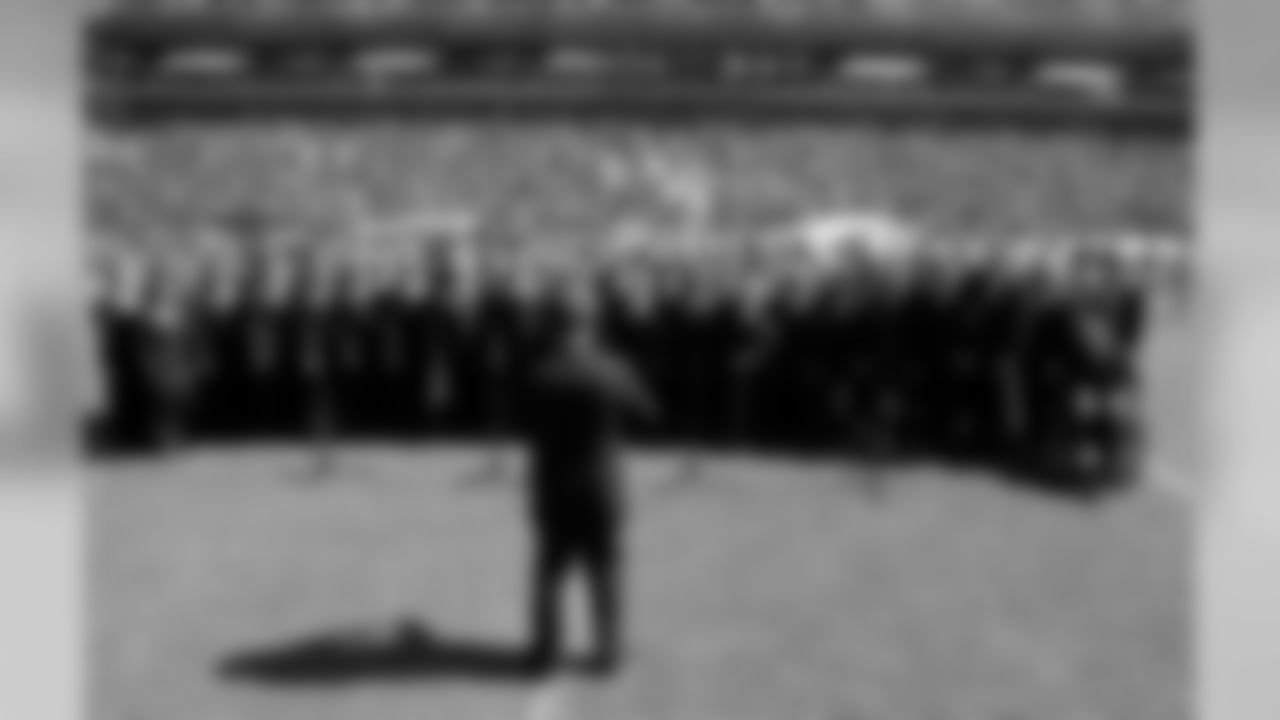
Bucs vs. Raiders

13 WR Mike Evans, #3 QB Jameis Winston, and Head Coach Dirk Koetter

Bucs vs. Raiders

Bucs vs. Raiders

93 DT Gerald McCoy

54 LB Lavonte David, #3 QB Jameis Winston, #69 OT Demar Dotson, #89 WR Russell Shepard, and #93 DT Gerald McCoy

Bucs fans

Bucs fan
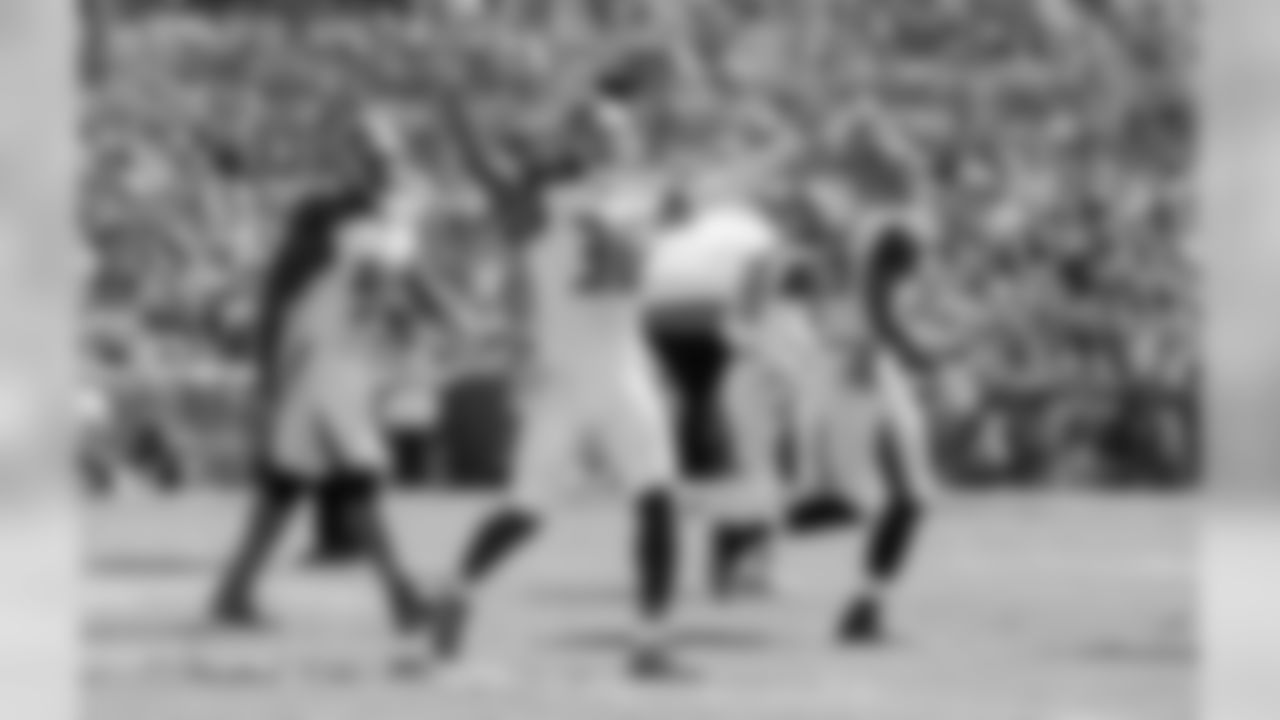
30 S Bradley McDougald
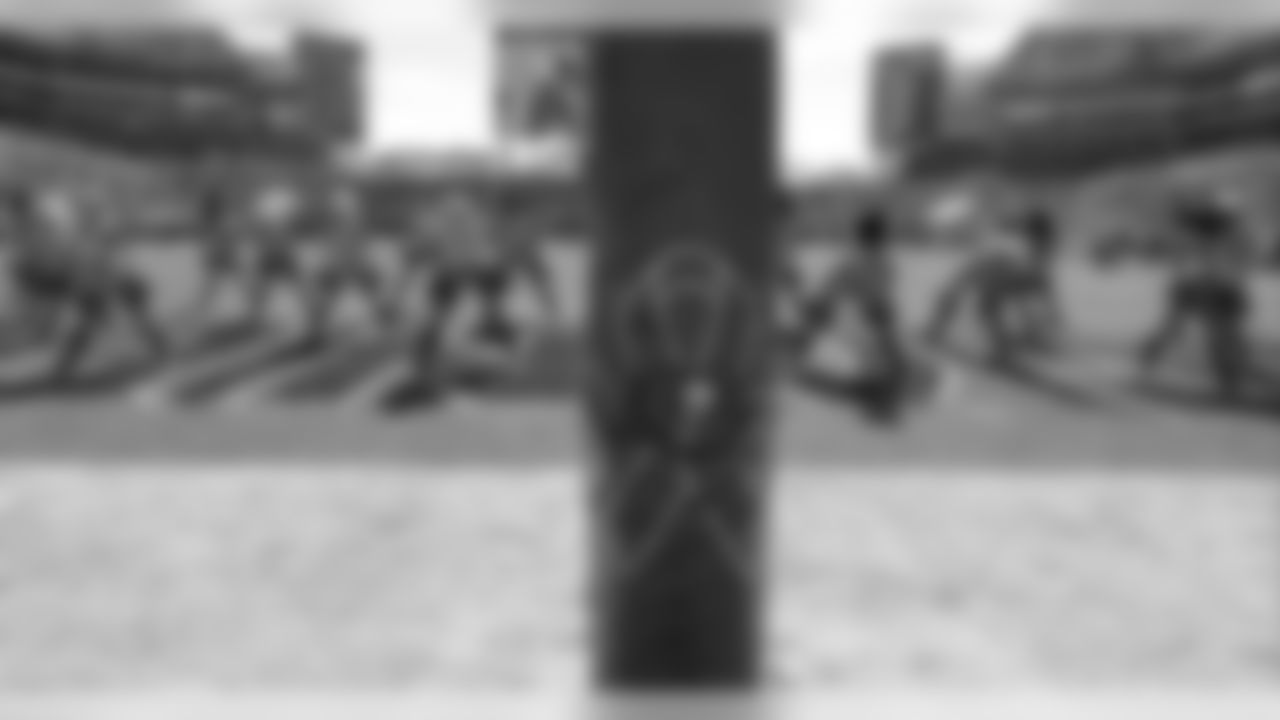
Bucs vs. Raiders

Bucs cheerleaders

Head Coach Dirk Koetter

Bucs cheerleader

Bucs vs. Raiders

68 C Joe Hawley

Bucs fans

Bucs fans

Bucs fans

Bucs fans

Bucs fans

Bucs cheerleader
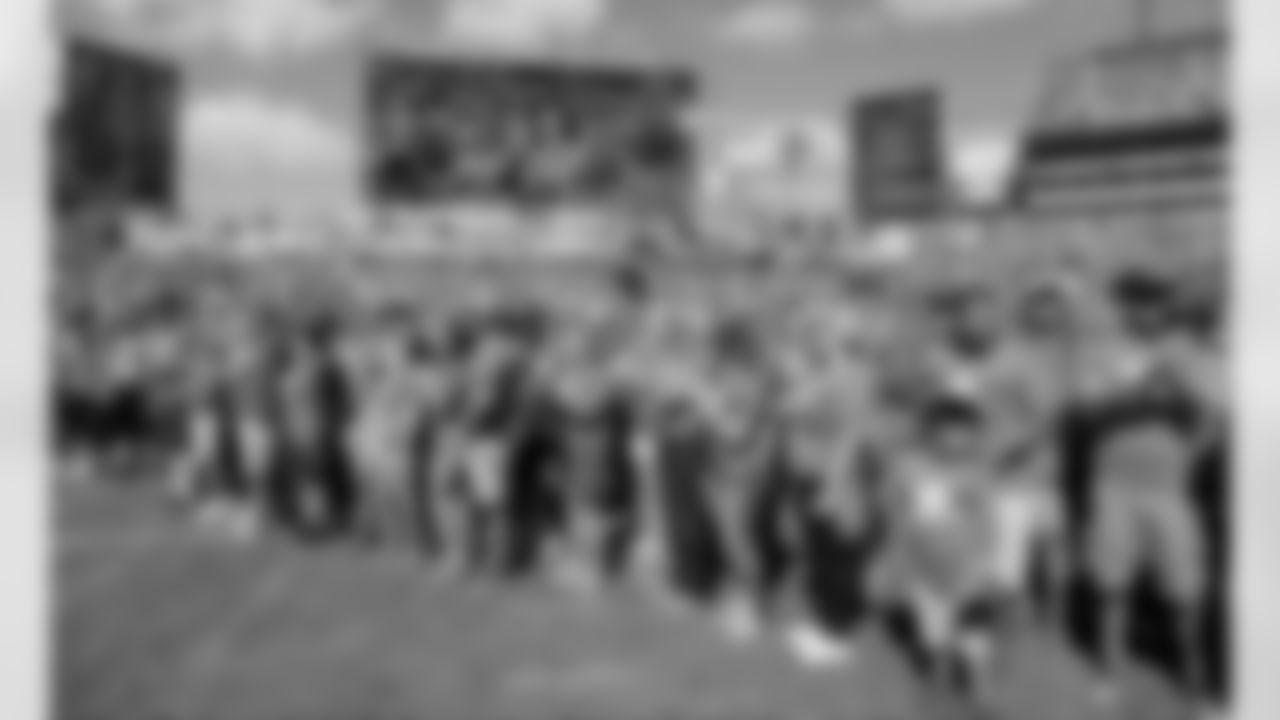
Bucs fans
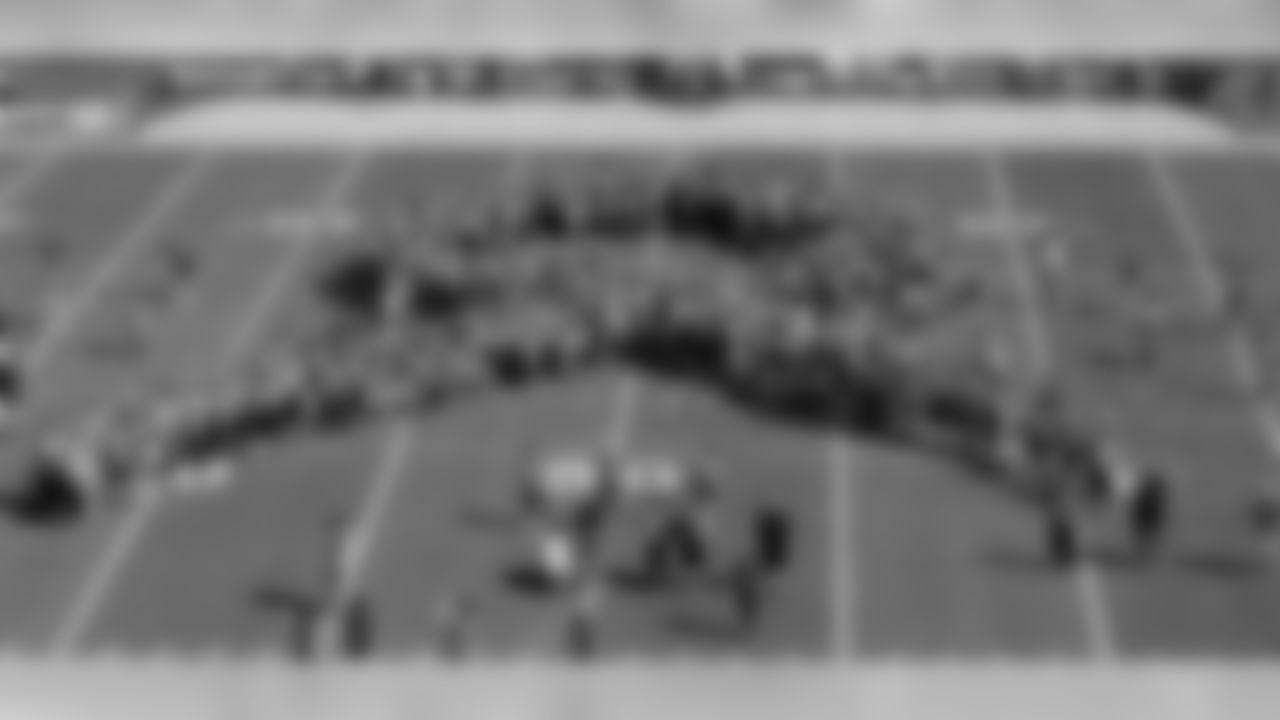
Bucs BCA halftime

Bucs fan

Bucs fan
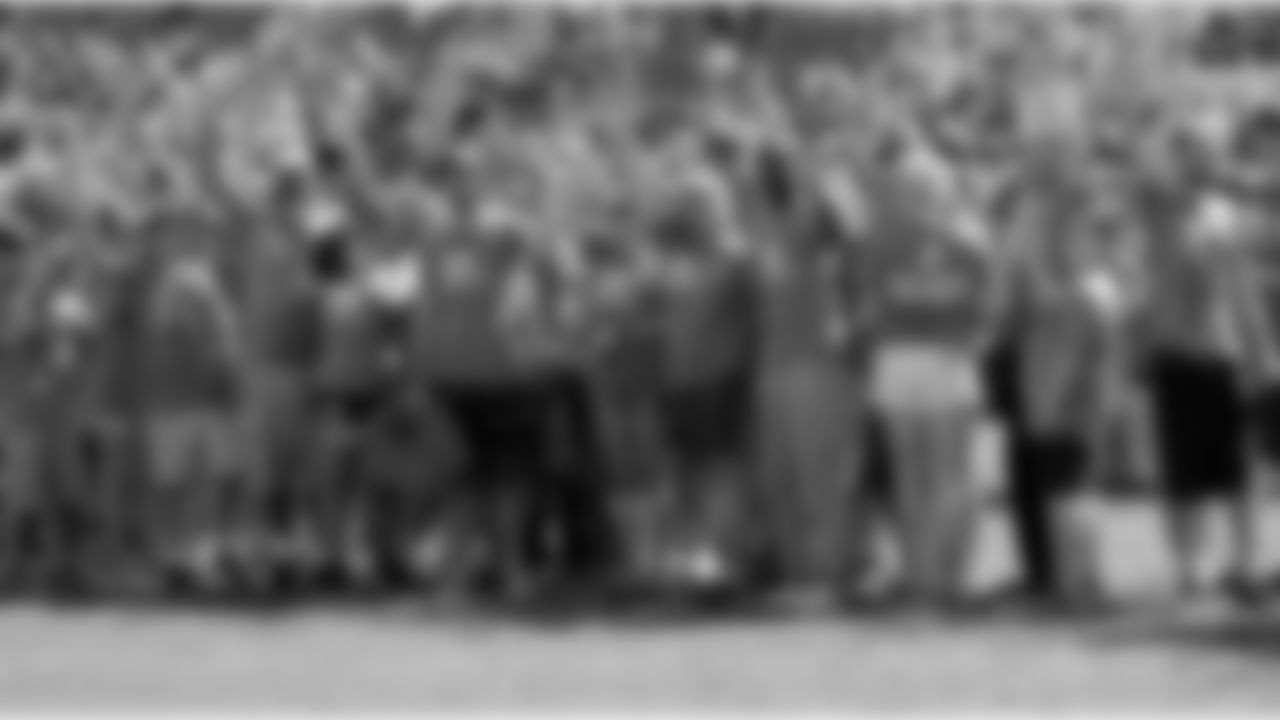
Bucs fans

Bucs fans

Bucs fan

Bucs cheerleader

Bucs fan

Captain Fear

68 C Joe Hawley, #84 TE Cameron Brate, and #82 TE Brandon Myers

Head Coach Dirk Koetter

Bucs cheerleaders

Bucs fans

Bucs vs. Raiders

Bucs cheerleader

Bucs fans

Bucs fans

93 DT Gerald McCoy

Bucs cheerleader

Bucs fans

Bucs fans

54 LB Lavonte David

93 DT Gerald McCoy

3 QB Jameis Winston
Evans was targeted twice in overtime. On the first one, the Buccaneers had just inherited the ball on their own 42 after a missed field goal. Winston threw deep but the ball fluttered in a strong wind and the play was broken up. Winston also looked for Evans on the next play, completing the pass for a gain of five. A third-down toss in Evans's direction on the next snap, however, was just barely broken up. The Bucs also took a shot deep to their number-one receiver in the fourth quarter and the route worked to perfection but the throw was too long.
"We ran Mike on an out-and-up and he was five yards behind the defense," said Koetter. "It would have been a 70-yard touchdown but we didn't hit it; it would have been a two-score lead. Pick your plays."
2. A sudden shift in explosive plays made the difference on Sunday.
The Buccaneers achieved their goal in what they consider the most important statistical indicator on Sunday, winning the turnover ratio, 1-0. Tampa Bay's offense, which had been giving the ball away far too frequently in the first month of the season, has turned it over only once in the last three games. As such, they were a hair away from a three-game winning streak.
The problem was that the second most important statistical indicator did not go in their direction. Oakland racked up more than 500 gross passing yards on the afternoon, and much of it came on big chunks, such as the 68-yard wheel-route reception by fullback Jamize Olawale in the second quarter, which set up Oakland's first points on a field goal.
Olawale's play, which came with the home team winning by a 10-0 margin, was the fulcrum upon which the big-play ratio swung on Sunday
"I'm a huge believer in explosives being the number-two stat behind turnovers in winning football," said Koetter, who had seen wide receiver Russell Shepard score on a fabulous 19-yard reception just minutes earlier. "We picked up our sixth explosive of the game on our offense on the first play of the second quarter on that touchdown pass to Shep. One quarter plus one play, we got six explosives; we only got one the whole rest of the game."
To avoid confusion for those who might study the play-by-play of Sunday's game, the Buccaneers' coaching staff defines explosive plays (or "explosives" as is the common parlance) as runs of 12 or more yards or completions of 16 or more yards. Koetter's count of six appears to include a 19-yard Winston scramble that was erased by a penalty. Humphries' 42-yard play in the fourth quarter was the only one that qualified from there on out.
That was not for a lack of trying. The Buccaneers looked downfield at least five times in their passing attack over the last four quarters.
"They didn't hit hardly in the first half; they got most of theirs in the second half," said Koetter of the Raiders. "We got most of ours in the first quarter and that first play, and then for some reason we couldn't hit ours. I thought we had some good chances."
3. Recovery is the most important job for the Buccaneers during this short week.
An extra quarter of play wasn't exactly what the Buccaneers were hoping for as they rolled into their most challenging week of preparation this season. Every team in the NFL gets at least one Thursday night game under the current scheduling format, and unless there is a well-placed bye week involved, that usually means a short week. Both the Buccaneers and the Falcons are dealing with that now, and it's a huge adjustment from a normal work week for both clubs.
"The main hurdle by far is the players' bodies recovering and being able to play," said Koetter, who went on to describe a normal week that had more time for player rest and coaches' game-planning. "That's all out the window for Thursday night football. Basically, this is a week with no practice."
The Buccaneers did not hold a practice on Monday but still submitted the week's first injury report, which included new additions in defensive end William Gholston, running back Jacquizz Rodgers and wide receiver Russell Shepard. Tight end Jacob Tamme is on the Falcons' injury report after suffering a shoulder injury against Green Bay on Sunday.
"Especially with the type of game we played yesterday, we've got a laundry list of guys with bumps and bruises," said Koetter. "You're going to have that every week. The number-one thing by far is the turnaround on the players' bodies, and number two is the preparation by the coaches. You're working on a couple days shorter [rest]. In that respect, it's probably a plus, if there is a plus, to play a division opponent who you know well."
























